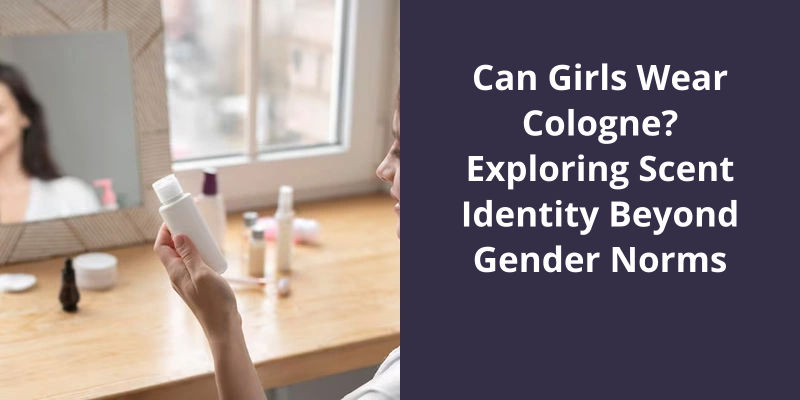When it comes to determining the age of a perfume, consumers often find themselves faced with a frustrating lack of information. Unlike food or medication, cosmetics and perfume brands rarely provide a clear, human-readable indication of when a product was made or when it will expire. Instead, they rely on batch codes or lot numbers that are convenient for the company but offer no insight to the average beauty product consumer. This lack of transparency can leave customers wondering just how old their favorite fragrances might be and whether they’re still safe to use. In this article, we will explore the challenges of deciphering perfume production dates and delve into the factors that can affect the longevity and quality of a fragrance. So, can you really see when a perfume was made? Let's find out.

How Do You Check if a Perfume Is Expired?
Do you’ve a bottle of perfume sitting on your dresser that you havent touched in ages? If so, you might be wondering if it’s still good to use. Perfumes, like any other beauty products, have a shelf life, and using an expired perfume can lead to disappointing results. So, how can you check if a perfume is expired?
The expiry date shouldn’t be confused with the Best Before Date, as the best time frame in which your perfume should be used.
To find the expiry date, look for it on the body of the packaging or below it. Many perfume brands include this information to ensure consumers are aware of the products lifespan. If you cant find the expiry date, check for any signs of deterioration, such as changes in color, consistency, or scent. These characteristics can be indicators that the perfume has expired.
Perfumes typically have a shelf life of around three to five years, but this can vary depending on the ingredients used.
Additionally, pay attention to how the perfume has been stored. Exposure to heat, light, and air can accelerate the expiration process. Perfumes should be stored in cool, dry places away from direct sunlight and extreme temperatures.
Common Ingredients in Perfumes and How They Affect Their Expiration Date.
Perfumes are made from a combination of various ingredients, including essential oils, aromatic compounds, and alcohol. These ingredients play a significant role in determining the shelf life and expiration date of a perfume.
When a perfume is made, the ingredients used may have different lifespans. Essential oils, for example, are derived from natural sources and tend to have a shorter shelf life compared to synthetic fragrance compounds. This is because natural oils can oxidize, degrade, and lose their potency over time, affecting the overall quality of the perfume.
In addition to the ingredients themselves, the concentration of certain components in a perfume can also impact it’s longevity. Higher concentrations of fragrance oils and alcohol tend to preserve the scent for a longer period.
Proper storage and handling of perfumes can significantly extend their lifespan. Exposure to heat, light, and air can accelerate the breakdown of ingredients and result in a perfume losing it’s original fragrance. By keeping perfumes in cool, dark places and tightly sealed containers, their expiration can be delayed.
While there’s no specific expiration date listed on perfume bottles, it’s generally recommended to use them within 1 to 3 years of opening. However, if a perfume starts to smell different or loses it’s original scent, it’s a sign that it’s expired.
Ultimately, the lifespan of a perfume can vary depending on the ingredients used, their concentrations, and storage conditions. Taking proper care of your perfumes can help you enjoy their full fragrance potential for as long as possible.
The barcode on a perfume’s packaging serves a purpose beyond just scanning it at the checkout counter. It contains valuable information about the product, such as it’s place and time of manufacture. It’s essential to recognize that different manufacturing locations can result in various barcodes even for the same fragrance. Understanding these barcodes helps consumers stay informed about their purchase and ensures they’re receiving genuine products.
What Is the Bar Code on Perfume?
The bar code found on perfume packaging holds crucial information about the products origin and manufacturing details. However, it’s important to note that the barcode alone can’t directly reveal when a specific perfume was made. Instead, it provides valuable insights into the location where the fragrance was manufactured and some additional data related to the production process.
As for the manufacturing dates, it’s worth mentioning that each perfume can be produced at different facilities worldwide. Consequently, variations in the barcode may arise due to differing manufacturing locations. These discrepancies occur because manufacturers typically assign unique barcodes for each production site, ensuring a comprehensive tracking system.
These methods often involve scrutinizing the packaging, labels, batch codes, or serial numbers provided by the manufacturer. By deciphering these codes or researching them online or contacting the brand directly, it’s often possible to obtain information about the fragrances production date.
Instead, relying on other indicators and decoding systems can provide more accurate insights into when a specific scent was created. Coupled with diligent research and attention to detail, this information can enhance the overall understanding and appreciation of the perfumes history.
The Importance of Batch Codes and Serial Numbers on Perfume Packaging
The batch codes and serial numbers printed on perfume packaging are critical for several reasons. Firstly, they provide valuable information about when the perfume was manufactured, allowing consumers to determine it’s freshness and shelf life. Perfumes, like other beauty products, have a limited lifespan and may expire or lose their potency over time.
Batch codes also assist in quality control and product traceability. By tracking the specific batch in which a perfume was produced, manufacturers can identify and resolve any issues or defects that may arise. This ensures that only perfumes of the highest quality reach the market.
Furthermore, batch codes and serial numbers are essential for authentication purposes. Counterfeit perfumes often lack these codes or feature irregular or suspicious markings. Authenticating the batch code can help consumers verify the product’s origin and protect themselves from purchasing counterfeit or tampered goods.
In conclusion, the batch codes and serial numbers imprinted on perfume packaging play a vital role in determining the perfume’s manufacturing date, ensuring product quality, and preventing counterfeit products from entering the market. Understanding and paying attention to these codes can help consumers make informed purchasing decisions and enjoy the freshest, authentic perfumes.
It’s true that a perfume batch code can provide valuable insight into the authenticity of a fragrance. However, it’s crucial to recognize that counterfeiters have found ways to manipulate this system by utilizing legitimate batch codes on their fake bottles. Thus, relying solely on the batch code isn’t sufficient to determine the legitimacy of a perfume. To ensure the authenticity of a fragrance, it’s essential to consider other factors such as packaging quality, labeling accuracy, and the scent itself.
Can Perfume Batch Code Be Fake?
Perfume batch codes are unique numbers or letters that manufacturers assign to each batch of perfume they produce. They serve as a way to track and identify specific batches throughout the production and distribution process. These codes can be helpful in determining the age of a perfume, as they often contain information about the date of production.
However, it’s important to note that a perfume batch code alone can’t definitively determine the authenticity or age of a perfume. Counterfeiters have become increasingly sophisticated in their ability to replicate packaging and labeling, including batch codes. They may use legitimate batch codes on their fake bottles to make them appear more authentic.
To ensure the authenticity of a perfume, it’s important to consider other aspects of the packaging and the perfume itself. Pay attention to the quality of the packaging, including the materials used and the printing. Look for any spelling mistakes or inconsistencies in the packaging and labeling.
You can also examine the fragrance itself. Authentic perfumes are often made with high-quality ingredients and have a well-balanced scent. If the fragrance seems off or doesn’t last as long as expected, it could be a sign of a counterfeit product.
Additionally, purchasing from authorized retailers or directly from the brands official website can help minimize the risk of purchasing a fake perfume. These retailers have direct relationships with the brands and are more likely to have authentic products.
How to Spot Fake Perfume Batch Codes
- Check the placement of the batch code. It should be on the packaging or bottle.
- Look for inconsistencies in font size, style, or alignment of the batch code.
- Verify the format of the batch code. It should follow a specific pattern depending on the brand.
- Research the brand’s official website or contact their customer support to confirm the validity of the batch code.
- Compare the batch code with genuine products of the same brand to ensure it matches.
- Beware of overly generic or suspicious batch codes that don’t provide any useful information.
- Be cautious of batch codes that appear tampered with or have been partially removed.
- Consider the overall quality and packaging of the perfume. Counterfeit products may have poor printing or low-quality materials.
- Trust your instincts. If something feels off or too good to be true, it’s wise to exercise caution.
Conclusion
While it would be beneficial for consumers to know when a perfume was made in order to ensure it’s freshness and efficacy, the current system offers no such transparency. It’s important for consumers to be aware of this and to consider other factors such as storage, usage, and quality indicators when using perfumes to maximize their enjoyment and effectiveness.




